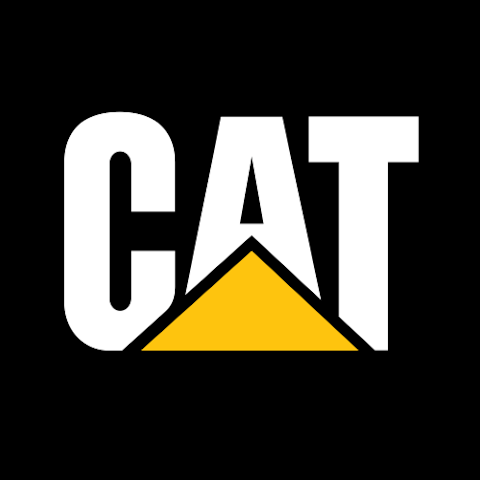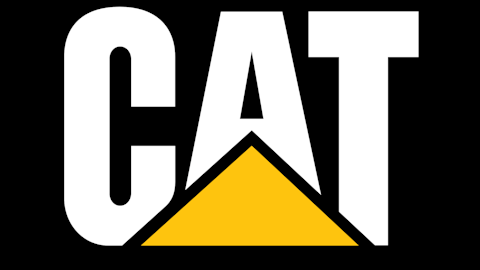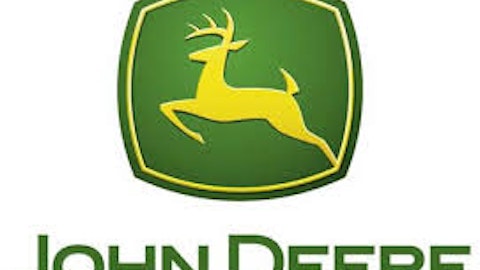The global economy continues its gradual, albeit painfully slow, recovery from the financial crisis. In particular, the housing market in the United States looks to be in the beginning stages of a clear recovery after its huge collapse during the depths of the Great Recession. Moreover, global economic development continues to show resilience, particularly in the emerging markets.
Given these industry tailwinds, and adding in the fact that the market continues to rally near all-time highs, you’d think the heavy machinery stocks, such as Caterpillar Inc. (NYSE:CAT), would be stellar performers over the past several months. Unfortunately for investors, that’s not the case. In a market of rising valuations, does Caterpillar represent one of the best values left in this market?
Pervasive industry struggles
When Caterpillar Inc. (NYSE:CAT) reported its full-year 2012 operating results, there were plenty of reasons for investors to smile. The company achieved record revenue and earnings per share for fiscal 2012 of $66 billion and $8.48 per share, respectively. Revenue increased 10% year over year, and EPS climbed 15% as compared to the prior year.
Farm and construction machinery giant Deere & Company (NYSE:DE) had a record-setting quarter of its own. Worldwide net sales increased 9% during both the second quarter and over the first six months of the year, as opposed to 2012.
Net income clocked in at $2.76 per share, representing 5.7% quarterly growth year over year. Earnings per share over the first half of the year were $4.41, growing 13% from the same period the year prior.
Mining equipment maker Joy Global Inc. (NYSE:JOY) has struggled throughout 2012. The company reported its first-half sales and diluted earnings per share dropped 6% and nearly 10%, respectively, year over year.
Less-than-rosy outlooks
Unfortunately, the news since has only served to give investors pause about the state of heavy machinery stocks. First, in its full-year report, Caterpillar management provided a fairly dour 2013 outlook. Caterpillar Inc. (NYSE:CAT) expects revenue to come in between $60 billion to $68 billion and earnings between $7 per share and $9 per share this year. Notably, the midpoints of these ranges represented full-year declines versus 2012.
Things actually got even worse than many investors feared when the company reported its first-quarter results. Caterpillar Inc. (NYSE:CAT)’s earnings per share collapsed by more than 40% and sales dropped 17% year over year.
Moreover, Caterpillar Inc. (NYSE:CAT) revised its already-pessimistic 2013 outlook even lower. The company now expects $7 per share in full-year earnings amid $57 billion to $61 billion in sales, reflecting the remaining struggles the global economy is facing.
For its part, Deere & Company (NYSE:DE) advised investors that the slow global economic recovery, combined with inclement weather, will take a toll on the company’s full year results. Deere & Company (NYSE:DE) said it expected worldwide sales of construction equipment to fall 5% this fiscal year.
Meanwhile, Joy Global Inc. (NYSE:JOY) management isn’t painting a bright picture for itself this year. Its CEO recently stated that the company’s capital expenditure analysis for mining equipment customers is down 40% to 50%. In addition, the prospect list of major projects that Joy Global Inc. (NYSE:JOY) tracks has declined by about 30% from 2012 levels.
Assuming stabilization, Caterpillar is a value play
The troubles encountering the heavy machinery and equipment industry are now well-known and reflected in the depressed valuations in these stocks. Each of these three stocks trades for less than 12 times earnings.
In particular, Caterpillar Inc. (NYSE:CAT)’s dividend yield and quality brand lead the three presented here. The company pays 2.5% at recent prices, ahead of both its competitors and the market’s 2% dividend yield. In addition, Caterpillar is the gold standard in the industry, carrying a $55 billion market value and is a Dow Jones Industrial Average component.
Moreover, Caterpillar is likely to increase its dividend in time for its next quarterly payout, which mean new investors would receive an even bigger yield. That, in conjunction with its massive industry footprint, global reach, and attractive valuation, make Caterpillar an attractive buy.
Robert Ciura has no position in any stocks mentioned. The Motley Fool has no position in any of the stocks mentioned. Robert is a member of The Motley Fool Blog Network — entries represent the personal opinion of the blogger and are not formally edited.
The article Should You Buy Caterpillar? originally appeared on Fool.com is written by Robert Ciura.
Copyright © 1995 – 2013 The Motley Fool, LLC. All rights reserved. The Motley Fool has a disclosure policy.




